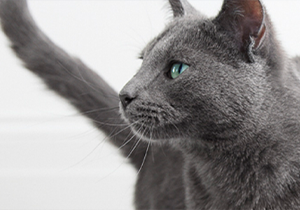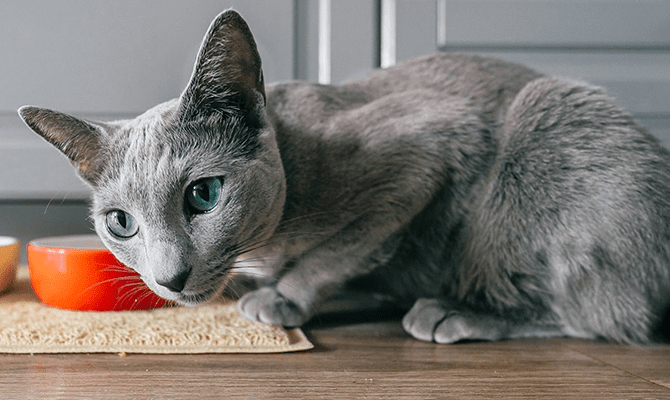Cat Feeding Schedule: How Much To Feed Cats
If you are raising a feline at home, you are sure to know what foodies these mystical balls of fur really are. There are few things a cat likes as much as it loves a hearty meal of delicious cat food and cat treats. And considering most cats prefer an active, energetic lifestyle, it is vital to make sure that they are well-fed and are receiving all the necessary nutrients to keep up with their adventures.
However, as much as our furry felines love to eat, they are also often susceptible to the risks of obesity caused by overeating, which can lead to various health issues if left unchecked. As a result, if you have a kitty, establishing a regular feeding routine is of utmost importance for their overall development and growth. This article helps you answer questions like how much to feed cats or how often to feed cats.
How Many Meals Should A Cat Eat In A Day?.

Wondering how much to feed cats? The nutritional requirements of a cat are dependent on its age and breed. When it comes to the question of how often to feed cats or feed the cat how much should a cat eat a day, ideally, cats should have at least 2 meals per day 12 hours apart. However, younger cats require a higher caloric intake, so if you are worried about how many times to feed a cat, you can settle on a strict cat feeding schedule. So how many times to feed a cat? Cats can also be fed more frequently in smaller amounts, such as breakfast, lunch, afternoon meals, dinner, and right before bed. However, it is important that you feed your cat at least once every 12 hours, so as to avoid nausea or a hyper acidic stomach.
Feeding Your Cat at Different Ages and Stages
If you are thinking about how much to feed cats, the cat feeding schedule and the dietary requirements of cats are mostly dependent on their age and can change over time. In fact, cats require the most nutritional diet in their growing years or when they are pregnant. When it comes to how often to feed cats or how much to feed kittens, the kitten feeding schedule is surprisingly frequent as they require higher calories to support their rapid growth and must be fed often throughout the day. Once your royal kitty has matured at 6 months, you can gradually settle on a cat feeding schedule feeding them just twice a day.
Methods To Feed Your Cat

Cat parents are often concerned about how many times to feed a cat, and the best ways to go about how much should a cat eat a day. Given that cats are creatures of habit, they can easily be trained to eating methods, such as:
-
Free Feeding Method
Free feeding method is one of the most popular ways that allow cat parents to figure out how many times does a cat eat a day and how often to feed cats. The free feeding method has grown popular as it is convenient for working cat parents. The free feeding method in the cat feeding schedule involves offering your cat easy access to food, allowing it to take a quick bite whenever they feel hungry.
The free feeding method works better with dry cat food, which unlike wet cat food, has a longer shelf life, and can be offered without being messy or spoiled when left out for long. However, the free-feeding method has an obvious drawback as it can lead to overeating, leading to obesity. Additionally, the free-feeding method makes it difficult for cat parents to track their furries' eating behaviour and notice any changes in feeding patterns in times of distress.
-
Scheduled Feeding Method
In comparison to the free feeding method, the scheduled feeding method appears to be considerably healthy and efficient once you are certain about how much to feed cats and feed the cat how much should a cat eat a day. Sticking to a strict cat feeding schedule not only ensures that your kitty is free from the risks of overeating, but also allows cat parents to supervise your Kitty's feeding patterns more closely.
Although the scheduled feeding method often comes off as additional responsibility for the cat parent, having a strict cat feeding schedule is particularly beneficial in multi-cat households, as it helps in ensuring all your fur babies are well-fed, and resolve any signs of distress among your kitties. It also allows you to monitor how often to feed cats - which should ideally be three times for kittens, and only twice for adult cats.
-
Combination Feeding Method
It is not surprising for first time cat parents to have more concerns about how much wet cat food and how many times to feed a cat or how much to feed cats. For those still unsure about the free feeding or the scheduled feeding methods, the combination feeding offers a middle ground. Instead of relying on one particular feeding method, the combination feeding method blends both, allowing a cat parent to gradually grow more confident about how many times to feed a cat.
In the combination feeding method for the cat feeding schedule, your majestic furry feline can be given wet cat food twice a day, making sure they stay well hydrated, while simultaneously allowing them to free feed on dry cat food. The combination feeding method also allows your kitty to be independent, and encourages more agency when it comes to eating.
Health Issues That Impact Feeding Requirements
- Diabetes: Diabetes is a prevalent health concern among obese and overweight cats. Considering cats love to eat and often end up overfeeding, it is important to always be wary of the signs of diabetes in cats.
- Hyperthyroidism: Maintaining a careful diet is important for avoiding hyperthyroidism in cats. Cats often face the risks of hyperthyroidism caused by foods that contain SOY, high iodine diets, or BPA in canned foods.
- Dental Issues: Cats often face the risks of oral and dental problems caused by sticky cat foods, such as cat treats. Sticky cat food particles are stubborn and difficult to remove, encouraging plaque buildup, and bacterial decomposition that might lead to gingivitis and bad breath in cats.
Conclusion
As responsible cat parents, it is beneficial to know how much to feed cats or how many times to feed the cat to make sure your cute little fur baby is healthy and thriving. Knowing wet cat food how many times does a cat eat helps in offering your kitty the perfect diet and setting a cat feeding schedule that suits them.
Although new cat parents often worry how often to feed cats, it does not call for any immediate concern. Just make sure your kitty has access to fresh and high-quality wet cat food and there is no overfeeding. Consider your feline munchkin's age and underlying health issues before planning appropriate meals and cat feeding schedule. Avoiding an interval of more than 12 hours in the cat feeding schedule is also important for preventing acidity issues and nausea in cats.
FAQs
-
How many times a day do kittens eat?
Kittens require a higher caloric intake than adult cats to support their rapid physical growth and cognitive development. Hence kittens below the age of 6 months should be fed several times a day at intervals of 3 to 4 hours.
-
How much should a cat eat a day?
The dietary and caloric requirements of cats are dependent on their age, breed, and lifestyle. However, the average adult cat needs to eat at least 300gms of food each day. Ideally, adult cats should be fed twice a day.
-
How many hours apart do cats eat?
Adult cats need to eat at least once every 12 hours not just to make sure they are well fed, but going without food for more than 12 hours can cause cats to have a hyper acidic stomach causing nausea.
-
Should cats eat 5 times a day?
Unlike kittens, adult cats rarely require a high caloric cat feeding schedule. Although cats can be fed 5 times a day, it is important to feed them in smaller quantities to avoid overfeeding that can lead to feline obesity and health issues.
-
Can I feed my cat 3 times a day?
Wondering how many times does a cat eat a day? Cats can be fed three times a day. However, considering an adult cat does not need more than 300gms of food per day, you should adjust their everyday diet accordingly.








